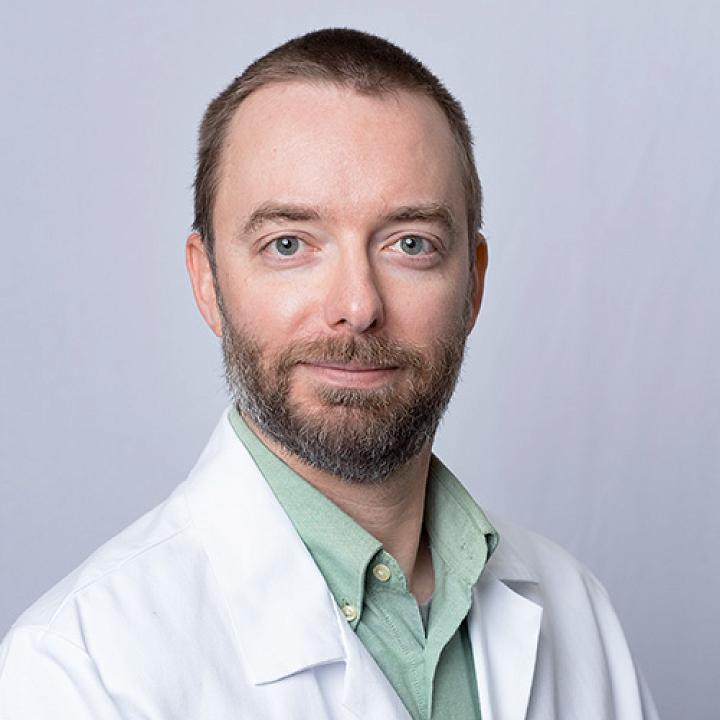
Cardiothoracic Imaging Fellowship
Jump to
Applications are currently being accepted for positions starting now through July 2026
Program Overview and Scope of Training
The University of Utah has an opening for a Cardiothoracic Imaging fellow. Clinical training includes both traditional thoracic radiology (radiography, CT, MRI) and advanced cardiothoracic imaging with CT and MRI. Exams performed in the Thoracic section include: chest radiographs, chest CT, HRCT, CTA chest, CTA TAVR studies for aortic valve planning, Cardiac MRI, CTA coronary, and CTA cardiac. We use post-processing tools including TeraRecon and CVI42.
The University of Utah is a tertiary referral center for ~10% of the continental US and, consequently, we see a broad variety of thoracic and cardiac disease. We have active heart and lung transplant programs, an active EP cardiology group, and other areas of sub-specialty clinics including ILD, cystic fibrosis, HHT and pulmonary hypertension.
Research is a growing aspect of our practice and fellow involvement is expected. The Utah Center for Advanced Imaging Research (UCAIR) is the research arm of our department, supporting imaging research at the University of Utah. The Center for Scientific Computing Institute (SCI) on the University main campus is a source for advanced imaging collaboration. In 2016, Vizient Inc. ranked the University of Utah Health Care #1 in the nation for quality among university hospitals. and fellows may opt for training in quality improvement.
Our Cardiothoracic Imaging section reads approximately 77,000 cardiopulmonary radiographic, computed tomographic, and magnetic resonance exams per year, including over 1,200 cardiac MR exams per year.
Fellows will participate in multidisciplinary conferences (oncology, interstitial lung disease (ILD), thoracic aorta/vascular) and research projects. Research areas include CT quantitative imaging of the lungs, ultra-low dose CT, cardiac MR, cystic fibrosis, COPD, medical image perception, and applications in machine learning.
Academic Pursuits
Academic time is provided to facilitate preparation for multi-disciplinary conferences, resident conferences, and inter-departmental teaching conferences. Fellows are encouraged but not required to prepare and submit a project to a national meeting.
Elective Time
Fellows are encouraged to pursue electives with other sections within the department. Time available is dependent on the availability of the accepting service. Elective rotations taken by former fellows include neuroradiology, interventional spine, and breast imaging.
Appointment & Benefits
Salary, conference and vacation time, and fringe benefits are competitive with other fellowship programs. More detailed information is available when you apply for the fellowship.
Internal Moonlighting opportunities are available.
Eligibility
To be eligible for appointment at the University of Utah School of Medicine, candidates must meet Utah state medical licensure requirements and one of the following qualifications:
- Be a graduate of a US or Canadian medical school accredited by the Liaison Committee on Medical Education (LCME) OR
- Be a graduate of a college of osteopathic medicine in the United States accredited by the American Osteopathic Association Commission on Osteopathic College Accreditation (AOACOCA) OR
- Be a graduate of a medical school outside of the United States who currently holds a valid certificate from the Educational Commission for Foreign Medical Graduates (ECFMG) prior to appointment.
Our selection committee places significant emphasis on key factors when reviewing applications, including USMLE results—such as passing Step 1 on the first attempt and a Step 2 score of 250 or higher—along with research experience, volunteer work, leadership qualities, potential for an academic career, exceptional letters of recommendation, formative life experiences, and personal characteristics that demonstrate determination, a growth mindset, maturity, strong communication skills, and adaptability.
While we believe these characteristics make for an excellent fellowship candidate, none of these criteria are requirements. We believe in reviewing applications holistically as applicants may excel in some particular areas.
International Medical Graduates
Due to current regulations for non-ACGME-accredited fellowship programs, we are unable to sponsor J-1 visas. However, we do accept applicants with H-1B and O-1 visa status.
For candidates interested in completing the ABR Alternate Pathway Program, please visit our Alternate Pathway page for more information.
Application Overview & Timeline
We have pledged to follow the fellowship embargo program proposed by the Society of Chairs of Academic Radiology Departments (SCARD). We are committed to a fair fellowship application process that allows residents the time to make an informed decision about their sub-specialty training. Our interviews are virtual, typically held in January.
Summary of Important Dates
- November 1 – First day to accept applications
- November 1 – Open house webinars can begin
- January 12 – Earliest date for hosting interviews
- January 26 – First day offers can be made, candidates can accept offers 12 PM EST
- Applicants have until 12 PM EST on January 28th to accept or decline any offer made prior to January 28th. For offers extended on or after January 28th, applicants have a one-day grace period to accept or decline.
- March 31 – Last date for hosting interviews
After the SCARD dates have passed, we will continue to accept applications on a rolling basis, provided that positions remain available.
Sample Interview Day Schedule
| 12:00 | Program Director Welcome |
| 12:45-2:45 | Faculty & Fellow Interviews |
| 2:45 | Interview Day Conclusion |
How to Apply
Cardiothoracic Application Form
Submit Letters of Recommendation here
Your application should include:
- STR Common Application
- Curriculum Vitae
- One-page personal statement
- USMLE scores for steps 1, 2 and 3. COMLEX scores may be substituted for USMLE
- Dean’s Letter (MSPE)
- Medical School Transcripts
- Personal photograph
- Three letters of recommendation, one of which must be from your current program director
Optional documents
- Medical School diploma
- Additional personal statement about why you want to train in Utah
International medical graduates must also include the following:
- Valid ECFMG certificate with Clinical Skills Assessment certification
- Evidence of previous training in the United States (if applicable)
Why Utah?
From sheer beauty to being the right size to the global influence of our health system, Utah has way more to offer than people know.
Living in Utah
From restaurants and museums to sports and outdoor events, check out our definitive guide to living in Utah!
Verifications
We use the standardized “Verification of Graduate Medical Education Training” (VGMET) form released in 2018 by the ACGME, AHA, NAMSS, and OPDA. If you have a customized form, require program director signature and/or our institutional seal please select the appropriate option and email us the form.
A charge of $25.00 - $55.00 will be assessed for each comprehensive letter of verification, payable via credit card using our on-line payment portal (or by check, if submitting the request by US mail). This charge is in place to offset the fees we commonly incur while credentialing our own incoming residents and fellows. We apologize for the inconvenience.
Once the request has been submitted via the link below, please e-mail a completed Authorization for Release of Information form to RadiologyResidency@utah.edu.
When we have received the payment and trainee authorization, you will receive the completed verification of training form via e-mail. If you have further questions, please call 801-581-2868.
The University of Utah School of Medicine does not discriminate on the basis of gender, sexual orientation, race, age, religion, color, national origin, disability, or veteran’s status. In accordance with the requirements of The Americans with Disabilities Act (ADA) and Section 504 of the Rehabilitation Act of 1973, as amended, (Section 504), the University of Utah provides reasonable accommodations to qualified individuals with disabilities, so that they may fully participate in its academic programs, employment opportunities, medical services, programs, and events.



